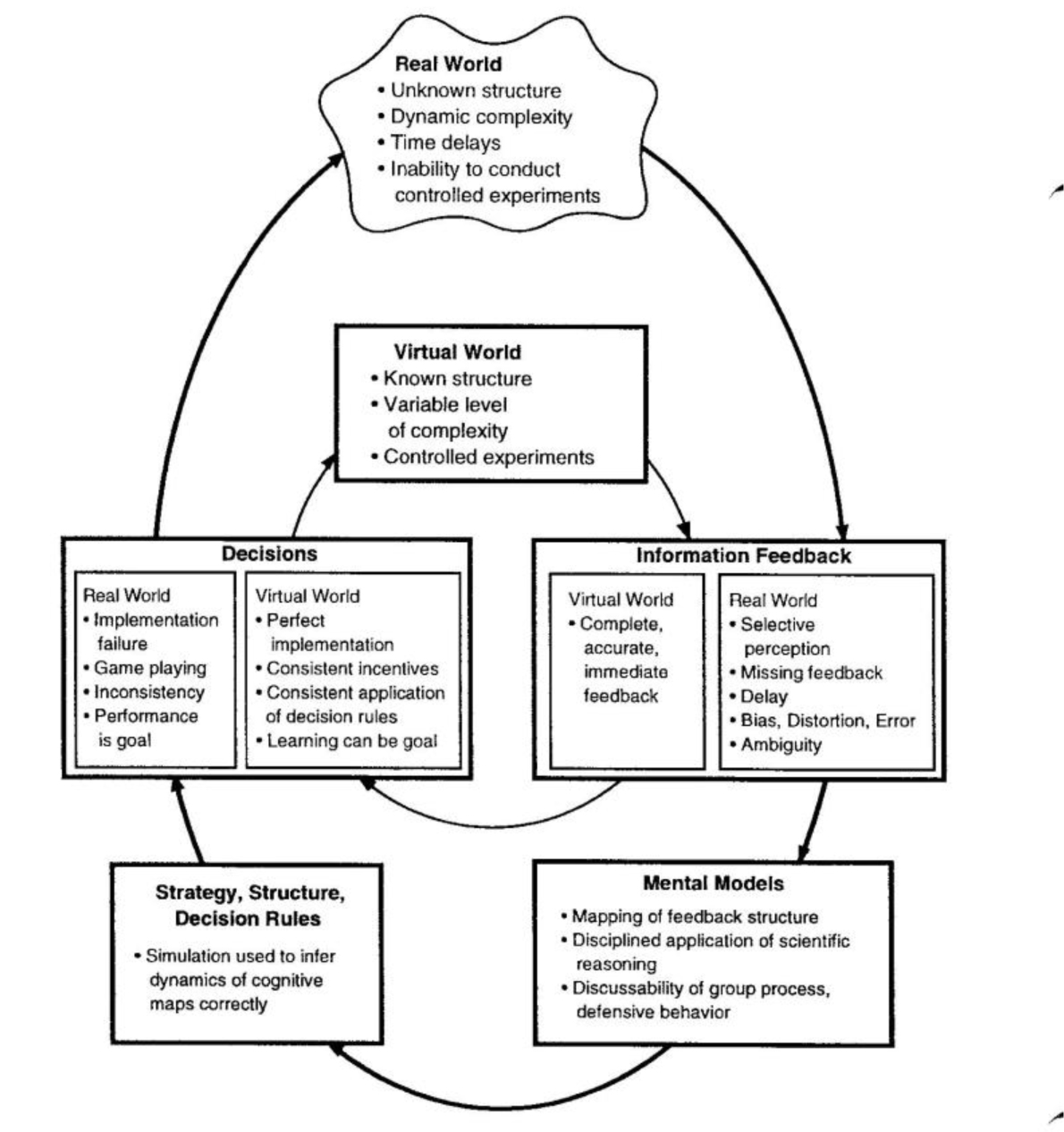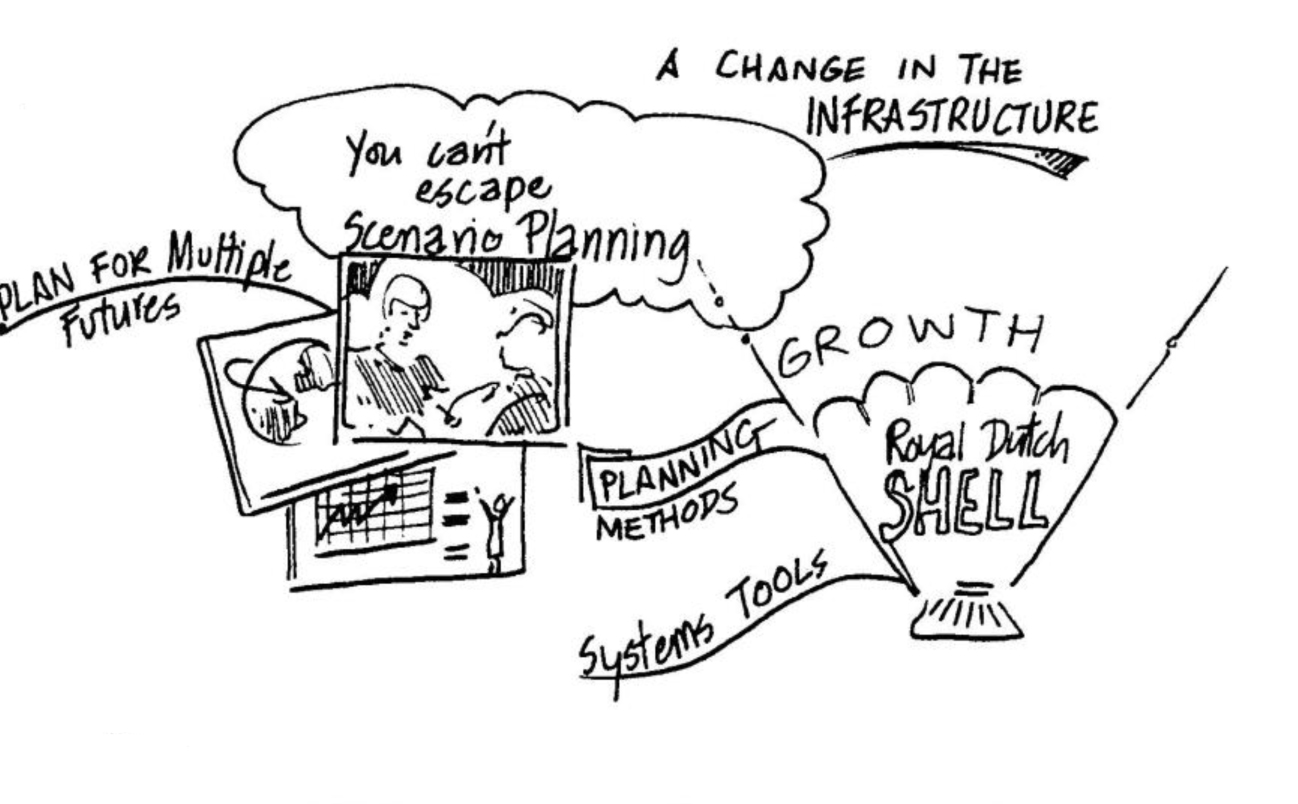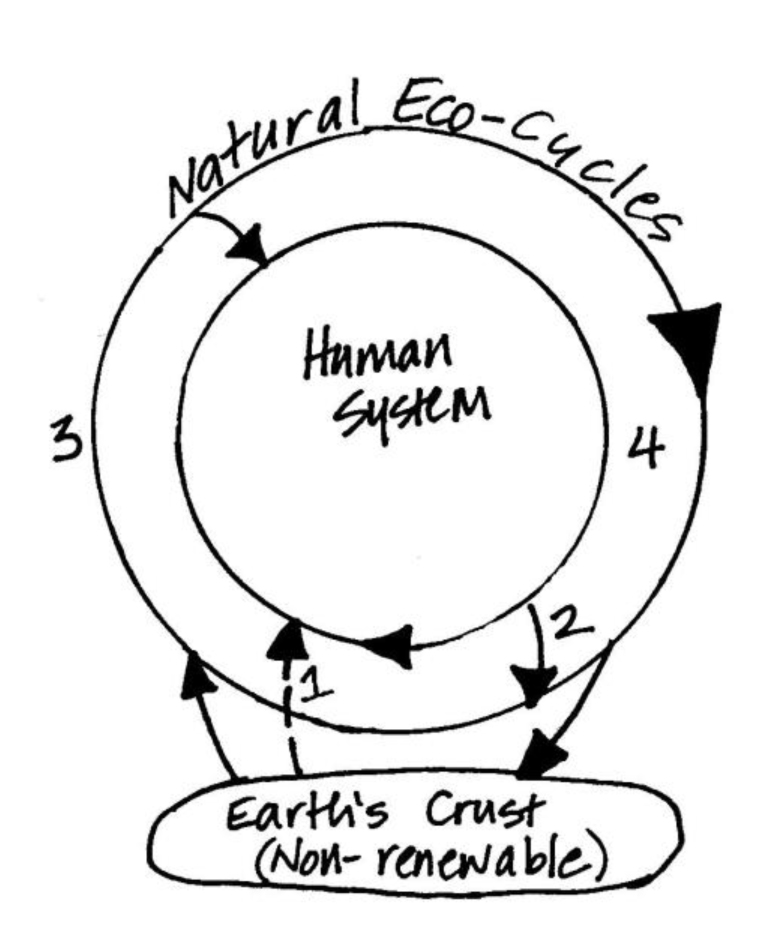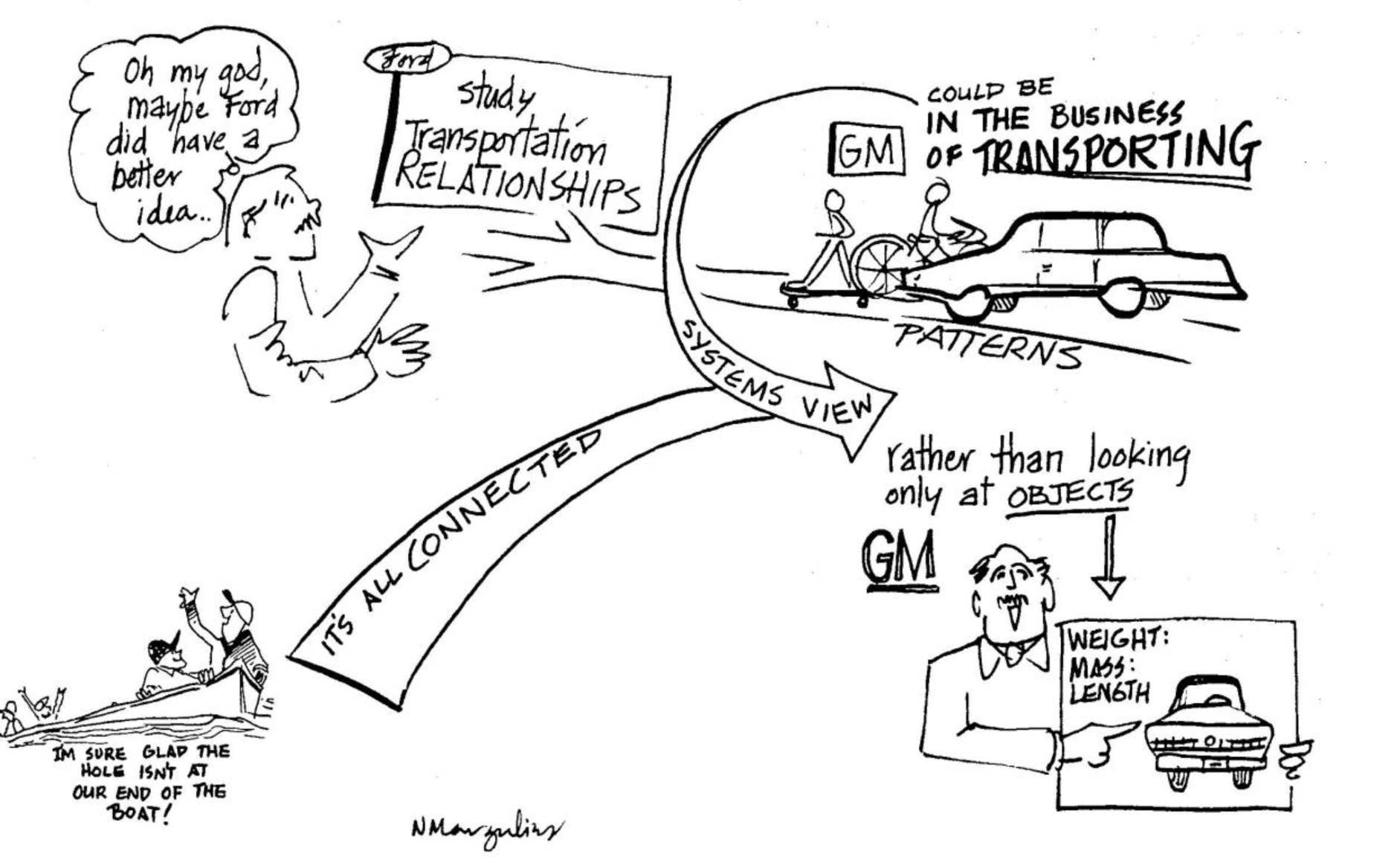Creating learning organizations takes more than a collection of individuals working toward the same cause; it requires building a community of learners who are committed to creating a new way of being that fosters collaboration, inquiry, and openness. The topic “Building Communities of Commitment” was the focus of this year’s Systems Thinking in ActionTM Conference. Each of the keynote speakers addressed this challenge from a particular framework, adding to and enriching our picture of this process.
Summaries of three of the keynote presentations appear on the following pages. The complete keynote sessions are available as part of the Systems Thinking in ActionTM Conference Collection.

Building learning organizations forces us to rethink some of our deepest assumptions about organizational systems and structures. John Stennan describes the challenges we face as decision makers in increasingly complex systems. In his view, creating learning communities will require developing tools and techniques to help us overcome barriers to learning.
-CLK
JOHN STERMAN SYSTEM DYNAMICS: THE FOUNDATION OF THE LEARNING ORGANIZATION
In the early 20th century, philosopher and scientist Otto Neurath envisioned scientists as “sailors who on the open sea must reconstruct their ship but are never able to start afresh from the bottom… They must make use of some drifting timber of the old structure…but they cannot put the ship in dock to start from scratch. During their work they stay on the old structure and deal with heavy gales and thundering waves.”
This a wonderful metaphor for the challenge we face in a world of ever-accelerating change. We must learn about complex systems—which have grown increasingly dangerous—all the while living in the midst of these systems. Luckily, we already know a great deal about how organizations learn. Our challenge is to synthesize what we know.
Feedback and Learning
Why is learning in complex systems so challenging? If we use feedback as a basic framework of learning, we make decisions, those decisions alter the real world, we get some information feedback about what is happening, and, based on that information, we make new decisions (see “The Learning Cycle”). Feedback processes like this are at the heart of learning tools such as the PDCA (Plan-Do-Check-Act) cycle in TQM.
The development of systems thinking involves replacing our short-term, reductionist mental models with a long-term, dynamic, more encompassing view, and then redesigning our policies and institutions accordingly. It requires a deep change in our worldview. For that kind of learning to take place, every link in the learning feedback loop must operate swiftly and effectively, faster than the changes in our environment that render the knowledge we gain obsolete.
Unfortunately, learning in complex systems is not quite as straightforward as the PDCA cycle would suggest. One problem is that there are long time delays between different parts of the feedback cycle: 1) between our decisions and their effects on the real world, 2) between their effects and our perception of their effects, and 3) between the time we perceive what we have to do and the time it takes to agree on an intervention.
In addition, the world is constantly evolving according to its own dynamics and those of our competitors, colleagues, and customers. Because other factors change even as we make our decisions, it often becomes impossible to know whether the changes we see are the result of our policies or of some other variable that changed in the meantime.
Further, all measurement is an act of selection. Our decisions are made within the context of decision rules or policies; that is, they are filtered and processed through the institutions and cultural norms structured by our mental models. The contents and information we define, measure, and attend to are constrained by our mental models, and changes in our mental models are constrained by what we have chosen to define, measure, and attend to.
Misperceptions of feedback account for another set of barriers. The inability of our mental models to deal with complexity results in what Jay Forrester, the founder of system dynamics, called the counter-intuitive behavior of social systems. People just don’t have the cognitive wherewithal to understand the dynamic complexity of the systems in which we live. Despite the fundamental principle of system dynamics—that the structure of the system gives rise to its dynamics—we still tend to blame problems on the other people in the system, which deters us from real learning.
The Learning Cycle

This diagram shows how a well-designed learning process works. Effective learning involves continuous experimentation in both the virtual world and the real world, with feedback from both informing development of the mental models, formal models, and design of experiments for the next cycle.
One of the greatest challenges we face is to bring the skills of scientific reasoning to our everyday tasks. When we are seeking to explain a phenomenon, we often do not generate sufficient alternative explanations; instead, we content ourselves with the first one that seems plausible. We intervene, but fail to carry out controlled experiments. Our judgments are often affected by the frame in which it is presented, even when the information itself is unchanged. We suffer from confirmation bias, the tendency to seek evidence that is consistent with our prior beliefs—which reinforces prejudice and error—rather than testing to see if those beliefs could be wrong.
Overcoming Barriers to Learning
Overcoming the multiple barriers to learning requires three types of innovation. First, we need tools and processes that help bring our mental models to the surface, so that our tacit and implicit beliefs can be challenged and enriched. Second, we need formal models and simulation environments that can help us assess the implications of those mental maps. Third, we need to develop better inquiry skills in order to sharpen our scientific reasoning abilities, improve our group processes, and overcome the defensive routines that can thwart learning. Approaches to organizational learning that are out of balance in these three dimensions are unlikely to succeed. Our job is to develop a strategy that brings them all together.
The great philosopher Hilary Putnam extended Neurath’s metaphor to include the essence of the community of commitment that is science: “My image is not of a single boat but a fleet of boats. The people in each boat are trying to reconstruct their own boat without modifying it so much at any one time that the boat sinks. People are passing supplies and tools from one boat to another and shouting advice and encouragement…to each other. People sometimes decide they do not like the boat they arc in and move to a different boat altogether. And sometimes a boat sinks or is abandoned. It is all a bit chaotic; but since it is a fleet, no one is ever totally out of signalling distance from all the other boats. We are not trapped in individual solipsistic hells, but invited to engage in a truly human dialogue, one that combines collectivity with individual responsibility.”
Learning effectively in a world of gales and thundering waves requires more than commitment; we must develop tools and techniques to overcome all the barriers to learning. Each year we see that some of our tools are becoming a little sharper, some of our boats a little sturdier. I look forward to working with all of you in the endless reconstruction of our fleet.
—Edited by Eileen Mullen
In order to sustain our learning, we need to create structures that enable the learning process to become embedded in the organization as part of its infrastructure. Peter Senge talks about Shell International Petroleum Company’s “planning as learning” process and The Natural Step movement in Sweden as illustrations of how organizational teaming infrastructures can be used to create large-scale change.
PETER SENGE—BUILDING LEARNING INFRASTRUCTURES
Learning is too important to leave to chance. This is why, sooner or later, efforts to develop learning organizations must focus on developing infrastructures for learning.
I first understood the importance of creating infrastructures for learning when I heard about the planning process at Royal Dutch Shell. In 1970, Shell was considered the “ugly sister” of the “seven sisters”—the major oil companies. Today Shell is the strongest. It moved from rock bottom to the top of the world oil industry in part through a steady evolution of the planning process, which is now called “planning as learning” at Shell. Shell has used the planning process to weave basic tools and methods for reflective thinking throughout the organization.
Starting in 1973, Shell’s planners started to experiment with scenario planning. In scenario planning, you don’t develop a plan, you produce multiple plans for multiple scenarios. Through this process, your mental models become much more explicit, because when you plan for multiple futures, your assumptions have to be articulated. Today you cannot escape scenario thinking at Shell because it is the way planning is done. It has become part of the organizational infrastructure.

Another example of building learning infrastructure is the work being done by groups within Ford Motor Co. that are experimenting with creating “learning laboratories” that are part of the product development process. The question the people at Ford are addressing is, “Is it possible to redesign this core process so that we aren’t just developing products, but are continually developing a better theory of how we develop products?” In this way, the learning process and the product development process are woven together.
At Federal Express, a group of managers has developed a customer sales learning laboratory that focuses on creating real partnerships with customers in order to build knowledge about global logistics issues. And at AT&T, they have instituted a set of learning sessions called forums, where teams meet to discuss strategic issues. For example, at the chairman’s forum, the top 150 people at AT&T meet twice a year to talk about the basic strategy of the company.
There are some simple characteristics that these experiments share: 1) they connect the learning agenda to core management processes and business imperatives—new product development, customer service, strategic planning; 2) key players are involved; and 3) they respect freedom of choice, because learning cannot be forced.
Informal Networks
I think of learning infrastructure in three areas: redesign of core processes, rethinking management hierarchy, and creating informal networks. The examples at Ford, Shell, and Federal Express concern the redesign of core business processes. Rethinking management hierarchy is also needed so that building knowledge increasingly becomes the responsibility of top management. For example, the evolution of planning as learning at Shell was guided for many years by the coordinator of worldwide planning.
A Sustainable Society

In some ways, however, the real pay-off for organizational learning may lie in the informal networks. Researchers led by John Seely Brown at Xerox Park identify “communities of practice” as a core medium through which learning seems to occur in organizations. Such communities are especially important for achieving broad-based commitment to new ideas, which is the necessary counterpart to hierarchical leadership. However, the power of informal networks can be difficult to tap. They can-not be mandated into existence, they may take years to form, and they are not easily controlled or diverted. In fact, they often “self organize,” growing organically and not in response to hierarchical leadership.
The Natural Step
A remarkable process unfolding today in Sweden may illuminate a core principle for developing informal learning networks. This principle has to do with the power of a transcendent image of a system of which we are a part to catalyze the self-organization of informal networks. To illustrate this, I’d like to talk a bit about The Natural Step, a movement toward developing a sustainable industrial society in Sweden.
The story begins with a cancer re-searcher, Dr. Karl-Henrik Robert, who found himself increasingly frustrated by public debates about environmental issues. It seemed to him that scientific debates immobilized us from acting. In response, he wrote a letter stating what he believed are the basic facts of how natural systems work and sent it to 20 scientists, asking for their advice and contributions. One year and 21 iterations later, he had a pamphlet that outlined basic precepts for sustainability, upon which all of the scientists agreed. In essence, these precepts, or “system conditions,” derive from a simple fact—nature works in cycles. There is no waste in nature; all by-products of one natural system are nutrients for another. In contrast, con-temporary industrial society is based on linear processes: we generate true “waste”—by-products that can go no-where.
The scientists then sent this letter to the ten largest companies in Sweden and to the King of Sweden, all of whom joined in the agreement. With their support, 4 million copies of the pamphlet, called The Natural Step, were distributed to Swedish households. People began to talk about it, and now a critical mass of people working for social change seems to be developing.
This entire process has been unified by a simple picture of an industrial system that respects the four conditions for sustainability, against which all actions (corporate, private, or organizational) must be assessed: 1) Does the action reduce the use of finite, nonrenewable re-sources? 2) Does it reduce the use of long-lived synthetic materials like CFCs? 3) Does it preserve or enhance natural eco-cycles? 4) Does it reduce the consumption of resources, or increase the metabolic rate of the recycling system? (see “A Sustainable Society”).
In 1991, Dr. Robert started talking to groups about The Natural Step. Today there are over 10,000 people organized into networks of professionals supporting this cause. In addition, the ICA supermarket chain is switching to biodegradable refrigerants in place of CFCs, Electrolux is developing totally “sustain-able” refrigerators, and IKEA is educating 25,000 employees worldwide with The Natural Step course.
Perhaps we are discovering a new principle for societal learning—particularly for developing societal learning infrastructures. As Dr. Robert explains, “If you want a large number of people to work together in a coordinated way, they must share an image of a system of which they are a part.” Informal learning networks seem to respect what Meg Wheatley calls the self-organizing properties of human systems. In such situations, there may be extraordinary power in an image of the system, which can catalyze informal networks of inquiry and action.
This may be how infrastructures for learning and building communities of commitment will come together. I often think about Sweden, a whole country catalyzed by a simple picture of the system of which they are a part. Perhaps that is the answer to the core leadership dilemma of our times: how we can create coordinated efforts around those systemic issues where mandated solutions from the top can never be implemented.
—Edited by Colleen Lannon-Kim
Another possible answer to the dilemma of creating coordinated action can be found in ecology. The natural environment consists of self-organizing and -regulating systems in which animals, plants, and microorganisms are linked in a complex web of relationships. Fritjof Capra tells us that by studying these natural systems, we can learn much about how to create sustainable communities that are continually learning and regenerating.
FRITJOF CAPRA SUSTAINABLE COMMUNITIES: A MANAGEMENT CHALLENGE
The great challenge of our rime is to create and nurture ecologically sustain-able communities in which we can satisfy our needs and aspirations without diminishing the chances of future generations. Understanding the principles of ecology and how systems organize themselves will help us build these sustainable human communities—whether they are educational, corporate, spiritual, or other.

Nature consists of self-organizing and self-regulating ecosystems in which animals, plants, and microorganisms are linked in a complex web of relationships. Therefore, understanding ecosystems requires understanding relationships. As John Muir says: “When we try to pick out anything by itself, we find it hitched to everything else in the universe.”
Seeing Relationships
The principle of interdependence requires a shift of perception from objects to relationships. This is also true for human communities. A vibrant community is aware of multiple relationships among its members, and nourishing the community means nourishing those relationships. In a business system, for example, the organization’s ability to maintain stable relationships with other living systems in its environment—customers, competitors, and vendors—all characterize the corporate identity.
Therefore, when elements in the environment change, an organization must also change in order to maintain stable relationships with those changing elements. And since things change all the time, a truly alive organization is always a learning organization. Systems thinking shows us that what remains stable is pattern of relationships; what changes is the internal structures.
For example, from this framework the managers of General Motors might say, “We are not really in the business of selling cars; we are in the business of maximizing our customer’s mobility.” Maximizing mobility will often involve cars, but it will also involve public transportation, bicycles, redesigning cities so people live closer to the work-place, and so on. Likewise, an oil company might say, “We are not in the business of selling oil; we are really in the business of satisfying our customer’s energy needs. Sometimes it will be oil, but eventually we will have to phase-in solar energy, develop effective means of energy conservation, and restructure our cities and our network of transportation.”
Why is this way of thinking so difficult? Because it goes counter to the entire Western scientific tradition. In science we have been taught to measure and weigh things. But relationships cannot be weighed and measured—they need to be mapped. And measuring and mapping are two very different approaches. Ultimately, this is a tension between substance and form. The study of substance begins with the question, “What is it made of?” while the study of form begins with the question, “What is its pattern?”
Networks
The basic pattern of life is a network pattern. Wherever you encounter life or see living systems, you see networks—nonlinear patterns that have influences that travel from one node to another and back again in a loop. All living systems have these feedback loops and therefore can regulate and correct themselves. For example, a community that maintains an active network of communication will learn from its mistakes, because the consequences of a mistake will spread through the network and return to the source along feedback loops. The community does not need someone from outside to tell it something is wrong. It can correct itself repeatedly; it can learn and organize itself.
This is why the pattern of life is called a pattern of self-organization. The multiple feedback loops in an ecosystem are also the patterns along which water, oxygen, and all the nutrients flow in the ecosystem. In ecosystems there is no waste—what is waste for one species is food for another. In this way, communities of organisms have evolved over billions of years, recycling the very same components and molecules again and again. The lesson for human communities is obvious. Our social structures and our businesses are organized in a linear way—we take in resources, we use them up, and then we throw them away.
Cyclical Systems
We need to close the loop and move toward cyclical systems. To do so, we need to redesign fundamentally our businesses.
Cycling and recycling matter in a community of organisms requires cooperation at all levels. Ecologists now recognize that every competition in nature takes place within an overarching framework of cooperation. When species fight for space it is very often a ritualized fight—when two types of coral fight for space in the ocean, for ex-ample, the smaller one simply bows out. The same is true for all relationships—the tendency to associate, establish links, and live inside one another is a central characteristic of life. And so a sustainable business organization will apply this principle of cooperation to partnerships along product cycles and in product teams.
Here we encounter a basic tension between economics and ecology: economics emphasizes competition, expansion, quantity; ecology emphasizes cooperation, conservation, and quality. Our challenge is to overcome this tension and unify competition and cooperation, quantity and quality. The goals of management traditionally have been almost exclusively economic ones, but to enlarge the conception of management into the ecological dimension means to integrate all business activities into the natural world.
The first and crucial task is therefore to reeducate managers to become ecologically literate. The inspiration to do so has to come from the top; then people at all levels of the company must be given freedom to express their concerns and discuss ecological concepts and values. When this is done, the self-organizing dynamic will take over, and the managers will reeducate themselves.
—Edited by Keltie T. Wardman
John Sterman is a professor of management science at the MIT Sloan School of Management and director of MIT’ s System Dynamics Group.
Peter Senge, author of The Fifth Discipline: The Art and Practice of the Learning Organization, is the director of the MIT Organizational Learning Center.
Fritjof Capra, physicist and systems theorist, is the co-author of EcoManagement and president of the Elmwood Institute, an international ecological think-tank.
The illustrations used throughout this text were taken from “mindmaps” drawn by Nancy Margulies (St. Louis, MO) during the keynote sessions at the conference. Further reading: John D. Sterrnan, “Learning In and About Complex Systems,” System Dynamics Review, Vol. 10, Nos. 2-3 (Summer-Fall 1994).
